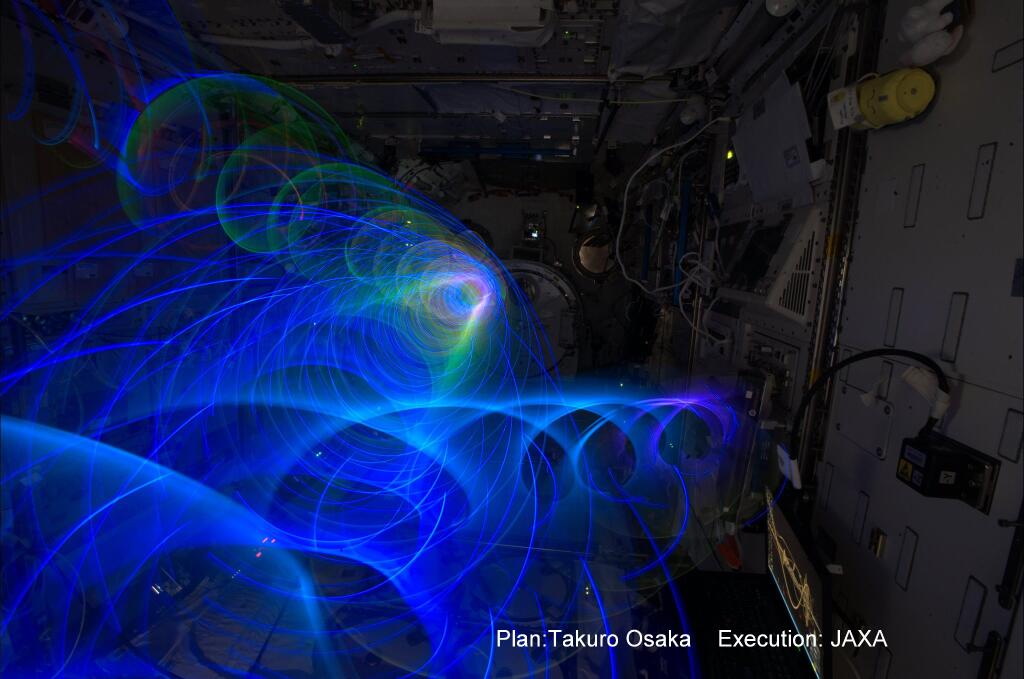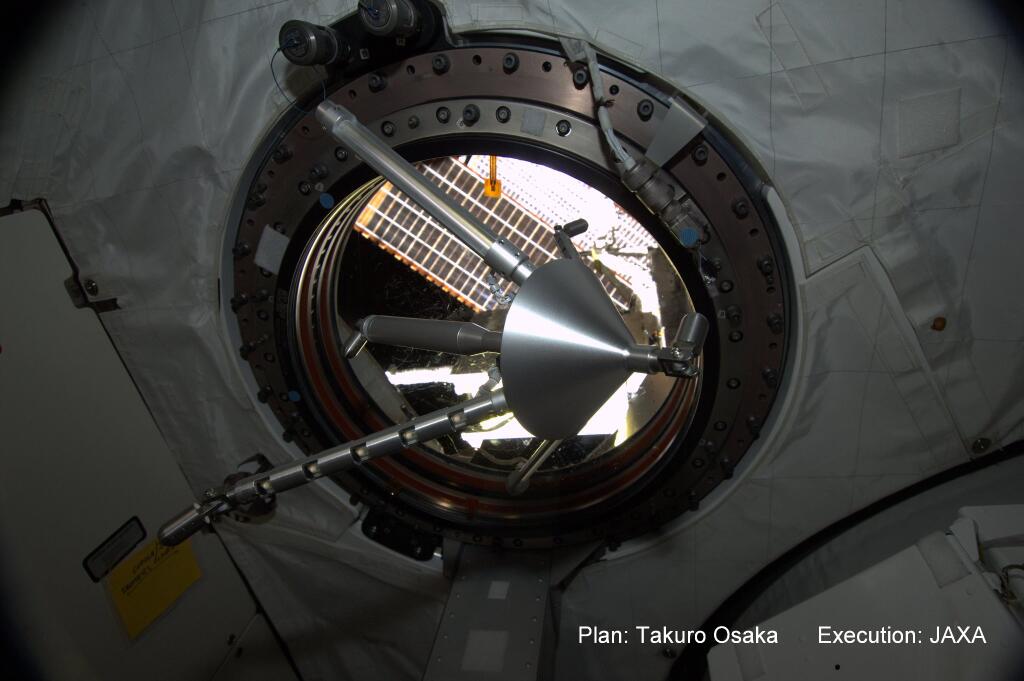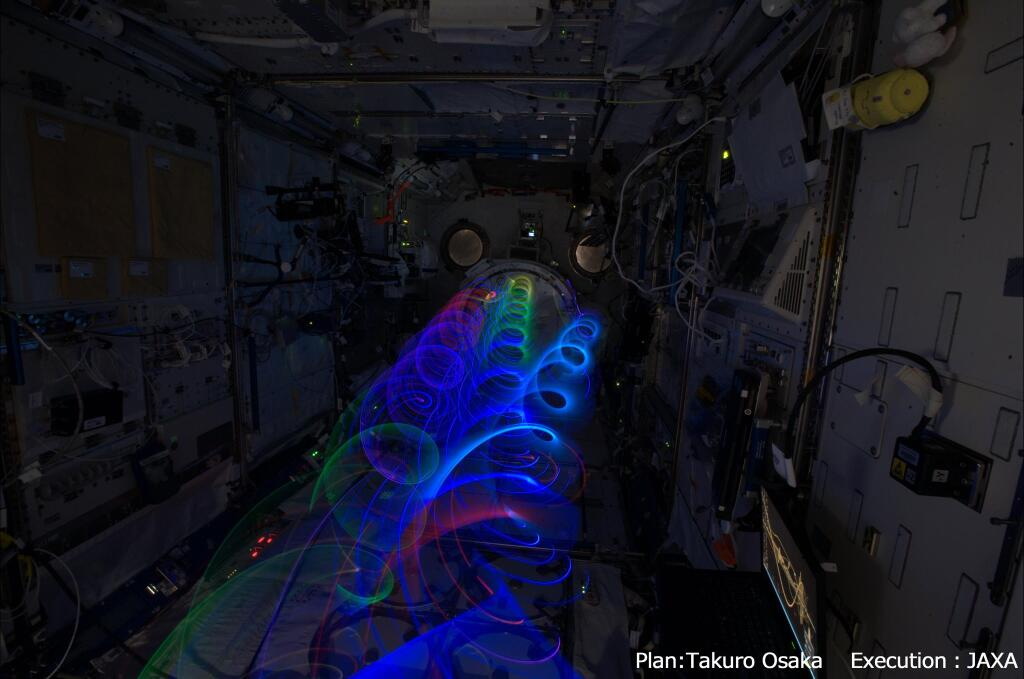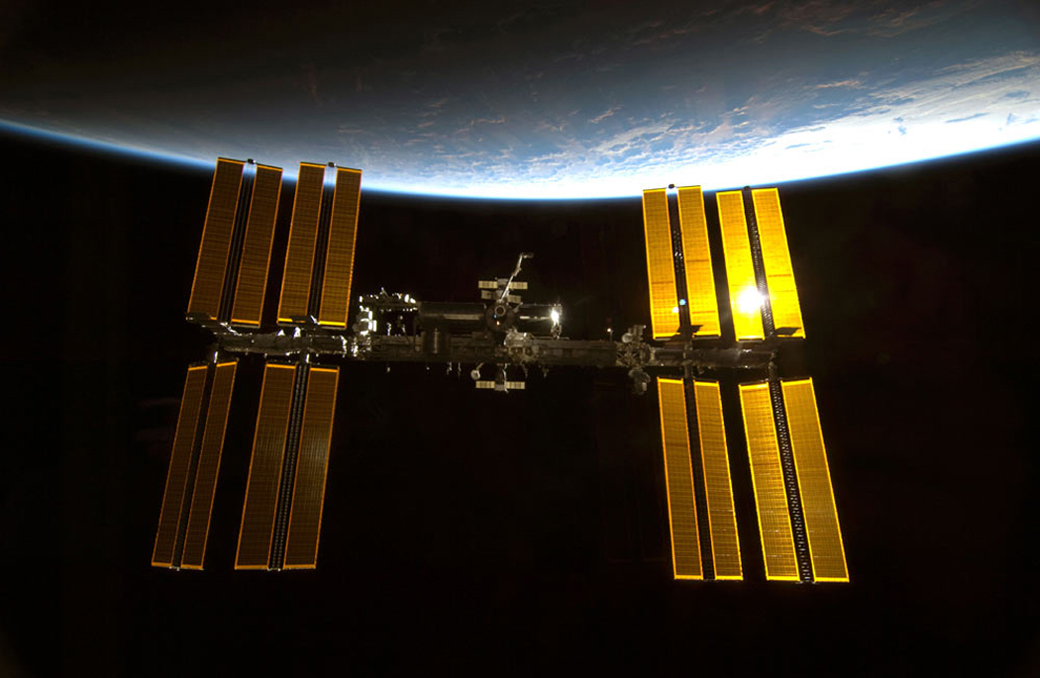Japanese Astronaut Creates Amazing Light Spirals in Space (Photos)

A Japanese astronaut created a microgravity, multicolored light show on the International Space Station in the name of art.
Japan Aerospace Exploration Agency (JAXA) astronaut Kiochi Wakata has been using a specialized device that can to create swirly light art in weightlessness on the orbiting outpost. Known as a "spiral top," the instrument is outfitted with LED lights so that when spun, the top will create light trails that can be captured in photos.
"In microgravity, the center of gravity of the spinning top continuously and randomly moves while it is spinning," JAXA officials said in an experiment description. "Using the characteristics of the top in microgravity, the project tries to produce various light arts using its unexpected movements/spins, by changing attaching locations of its arms and weights." [See more amazing photos from astronaut Kiochi Wakata]
The end result of those spins in microgravity is an amazing light portrait that looks otherworldly. Wakata posted a few photos on Twitter earlier in January 2014 that show blue, green, yellow and red spirals shooting through a module on the space station. "Potential of what zero-gravity can create is unlimited!" Wakata (@Astro_Wakata) wrote on Twitter in a post from Jan. 6.
"When we ask astronauts to carry out an art experiment, they work on it with great excitement and enthusiasm," Keiji Tachikawa, president of JAXA, said in a 2011 Q&A. "I believe that experiments for the humanities and social sciences have a great deal of meaning. How we can culturally reflect the wonderful results that have been achieved thus far — this will be a moment of truth."
This isn't the first time JAXA has worked with a spiral top, originally created by Takuro Osaka. Astronauts used an earlier version of the experiment to create light art in 2009 on the space station as well.
The $100 billion space station is the largest structure ever built in space. It has the wingspan of a football field and the living space of a five-bedroom house. Crews of astronauts and cosmonauts have continuously staffed the orbiting outpost since 2000.
Breaking space news, the latest updates on rocket launches, skywatching events and more!
Follow Miriam Kramer @mirikramer and Google+. Follow us @Spacedotcom, Facebook and Google+. Original article on Space.com.

Miriam Kramer joined Space.com as a Staff Writer in December 2012. Since then, she has floated in weightlessness on a zero-gravity flight, felt the pull of 4-Gs in a trainer aircraft and watched rockets soar into space from Florida and Virginia. She also served as Space.com's lead space entertainment reporter, and enjoys all aspects of space news, astronomy and commercial spaceflight. Miriam has also presented space stories during live interviews with Fox News and other TV and radio outlets. She originally hails from Knoxville, Tennessee where she and her family would take trips to dark spots on the outskirts of town to watch meteor showers every year. She loves to travel and one day hopes to see the northern lights in person. Miriam is currently a space reporter with Axios, writing the Axios Space newsletter. You can follow Miriam on Twitter.



